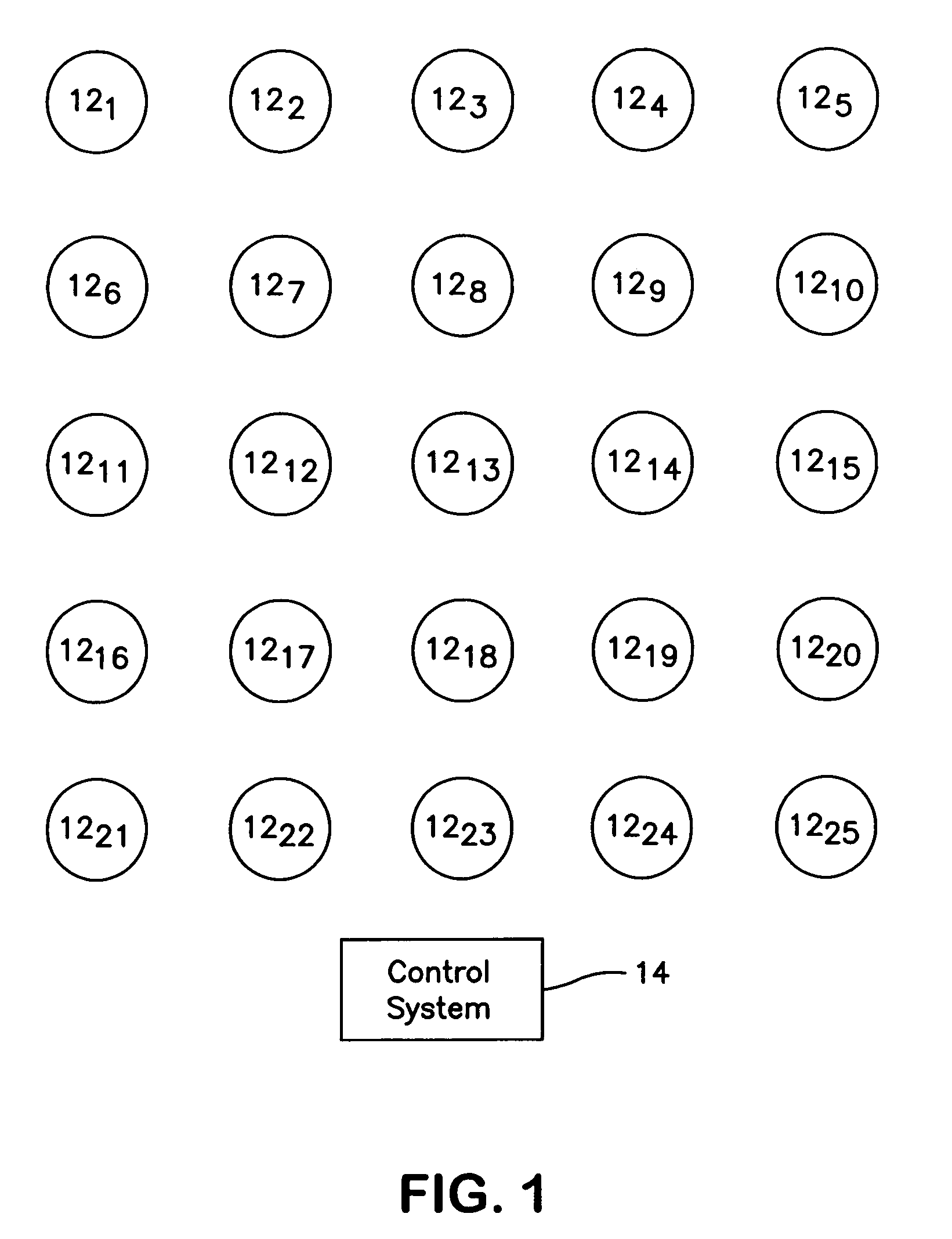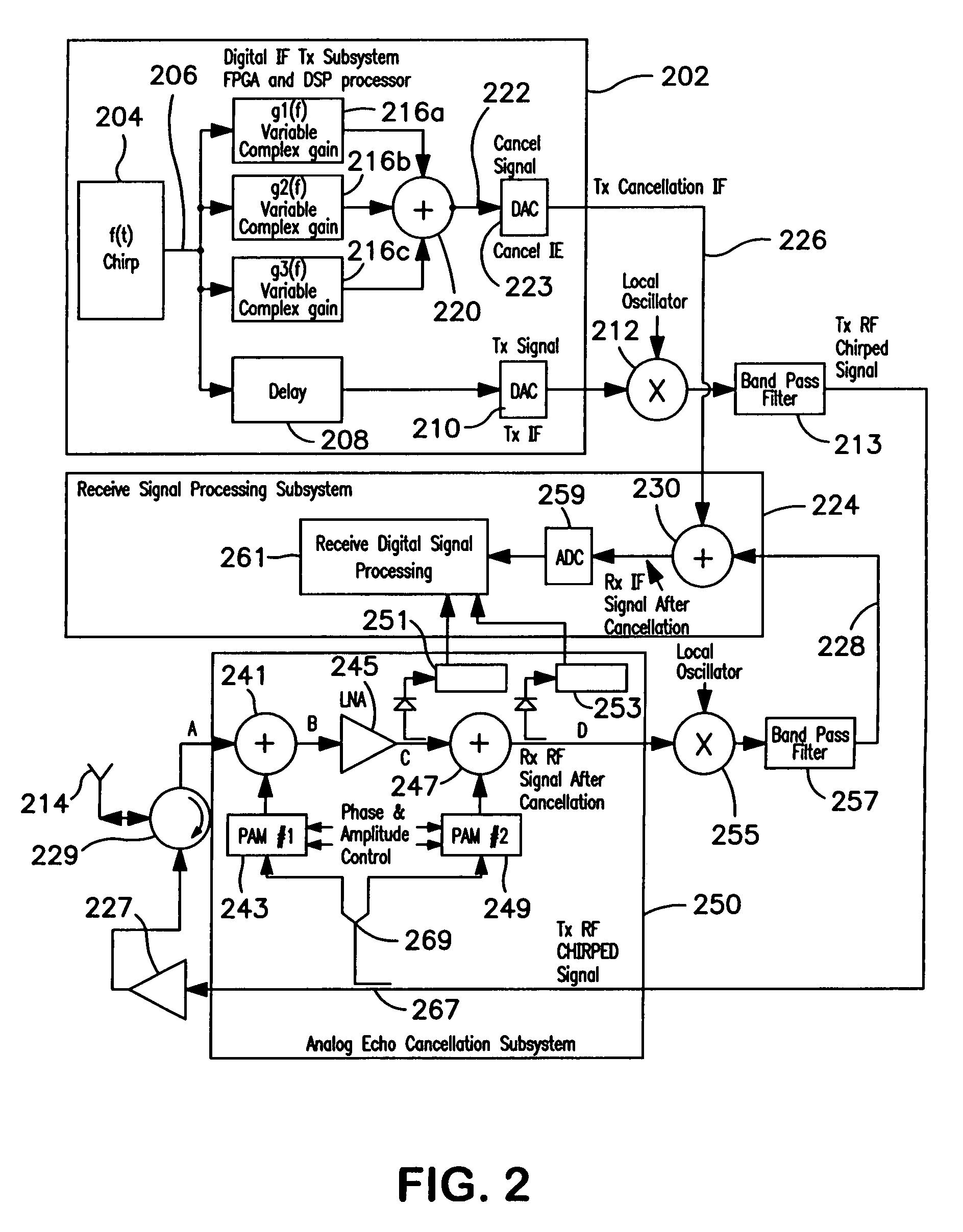Method and apparatus for equalizing broadband chirped signal
a broadband chirped signal and equalization technology, applied in the field of equalization of chirped signals, can solve the problems of impedance mismatch at the interface between a connector and a wire, the signal component will need to have many taps, and be extremely long and complex
- Summary
- Abstract
- Description
- Claims
- Application Information
AI Technical Summary
Benefits of technology
Problems solved by technology
Method used
Image
Examples
Embodiment Construction
[0015]In accordance with the present invention, in order to generate a signal for canceling a known, unwanted chirped signal, a cancellation signal is generated using a single-term, variable, complex gain multiplier adapted to cancel the chirped signal only in its narrow instantaneous frequency range, rather than attempting to cancel it with a complex FIR or other filter that continuously compensates over the entire bandwidth of the chirped signal. The simple, narrowband cancellation signal is varied in amplitude and phase as a function of the frequency of the chirped transmit signal which it is intended to compensate. Since the signal that is to be cancelled is essentially a narrowband sinusoidal signal, but swept through a broad frequency range, the cancellation signal for the instantaneous transmit signal needs to be varied in both amplitude and phase in unison with the change in frequency of the transmit signal in order to accommodate gain and phase changes in the transmitted si...
PUM
 Login to View More
Login to View More Abstract
Description
Claims
Application Information
 Login to View More
Login to View More - R&D
- Intellectual Property
- Life Sciences
- Materials
- Tech Scout
- Unparalleled Data Quality
- Higher Quality Content
- 60% Fewer Hallucinations
Browse by: Latest US Patents, China's latest patents, Technical Efficacy Thesaurus, Application Domain, Technology Topic, Popular Technical Reports.
© 2025 PatSnap. All rights reserved.Legal|Privacy policy|Modern Slavery Act Transparency Statement|Sitemap|About US| Contact US: help@patsnap.com



